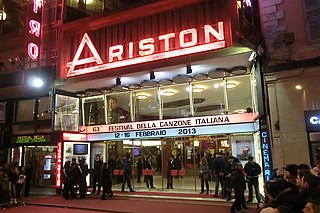
The Sanremo Music Festival, officially the Italian Song Festival, is the most popular Italian song contest and awards ceremony, held annually in the city of Sanremo, Liguria, organized and broadcast by Italian public broadcaster RAI. It is the longest-running annual TV music competition in the world on a national level and it is also the basis and inspiration for the annual Eurovision Song Contest.
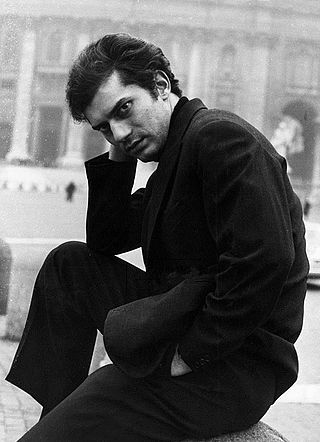
Luigi Tenco was a popular Italian singer-songwriter.

"Nel blu, dipinto di blu", popularly known as "Volare", is a song originally recorded by Italian singer-songwriter Domenico Modugno, with music composed by himself and Italian lyrics written by himself and Franco Migliacci. It was released as a single on 1 February 1958.

"Tom Pillibi" is a song recorded by French singer Jacqueline Boyer with music composed by André Popp and French lyrics written by Pierre Cour. It was released as a single on 10 April 1960. It represented France in the Eurovision Song Contest 1960 held in London, winning the contest. It was covered by several artist including Julie Andrews.
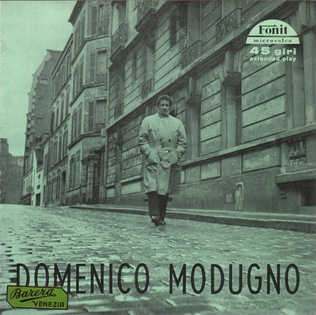
"Piove " is a song with music composed by Domenico Modugno and Italian lyrics written by Eduardo Verde. It won first prize at the 1959 Sanremo Music Festival, where it was performed by both Modugno and Johnny Dorelli. It represented Italy in the Eurovision Song Contest 1959 held in Cannes, performed by Modugno and placing sixth.

"Uno per tutte" is a song written by Tony Renis, Mogol and Alberto Testa. It was first performed by Renis and Emilio Pericoli during the 13th Sanremo Music Festival, in February 1963, where they performed two different versions of the song, placing first in the competition. The song was then chosen to represent Italy in the Eurovision Song Contest 1963, where it was performed by Pericoli.

Renato Ranucci, known by the stage name Renato Rascel, was an Italian film actor and singer. He appeared in 50 films between 1942 and 1972. He represented Italy in the Eurovision Song Contest 1960 with the song "Romantica", which tied for eighth place out of thirteen entries.
"Canzone per te", written by Italian composer Sergio Endrigo. The song won the the 1968 edition of the Sanremo Music Festival, with a double performance by Endrigo and Roberto Carlos.
"Come prima" is an Italian song, with lyrics by Mario Panzeri and music by Vincenzo Di Paola and Sandro Taccani. First made popular by Tony Dallara in Italy in 1957, a version by the Marino Marini Quartet was a hit in the United Kingdom in 1958.

The Sanremo Music Festival 2010, officially the 60th Italian Song Festival, was the 60th annual Sanremo Music Festival, held at the Teatro Ariston in Sanremo between 16 February 2010 and 20 February 2010 and broadcast by Rai 1. It was presented by Antonella Clerici, while the artistic director was Gianmarco Mazzi.

Antonio Lardera, better known by his stage name Tony Dallara, is an Italian former singer, actor and television personality.

Dino Verde was an Italian author, lyricist, playwright and screenwriter.
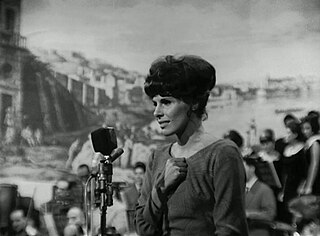
The Festival della Canzone Napoletana, commonly known as the Festival di Napoli, is a Neapolitan song contest. The first edition was held in 1952 and the last in 2004. From 1952 to 1970 the show was broadcast on RAI and from 1998 to 2004, in a differently spirited version, by Rete 4.

The Sanremo Music Festival 1967, officially the 17th Italian Song Festival, was the 17th annual Sanremo Music Festival, held at the Sanremo Casino in Sanremo between 26 and 28 January 1967 and presented by Mike Bongiorno and Renata Mauro. According to the rules of this edition, every song was performed in a double performance by a couple of singers or groups. The winners of the festival were Iva Zanicchi and Claudio Villa with the song "Non pensare a me". Villa was thus selected to represent Italy at the Eurovision Song Contest 1967, with "Non andare più lontano".
Estonia participated in the Eurovision Song Contest 2017 with the song "Verona" written by Sven Lõhmus. The song was performed by Koit Toome, who had previously represented Estonia in the Eurovision Song Contest in 1998 where he placed twelfth with the song "Mere lapsed", and Laura, who had previously represented Estonia in the Eurovision Song Contest in 2005 as part of the group Suntribe where she failed to qualify to the final with the song "Let's Get Loud". The Estonian broadcaster Eesti Rahvusringhääling (ERR) organised the national final Eesti Laul 2017 in order to select the Estonian entry for the 2017 contest in Kyiv, Ukraine. The national final consisted of three shows: two semi-finals and a final. Ten songs competed in each semi-final and five from each semi-final as determined by a jury panel and public vote qualified to the final. In the final, the winner was selected over two rounds of voting. In the first round, a jury panel and a public vote selected the top three to qualify to the super final. In the super final, "Verona" performed by Koit Toome and Laura was selected as the winner entirely by a public vote.
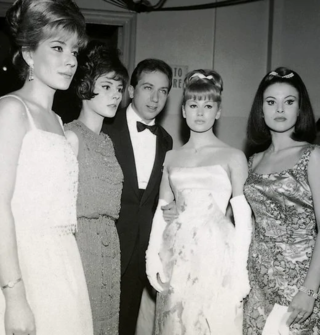
The Sanremo Music Festival 1963, officially the 13th Italian Song Festival, was the 13th annual Sanremo Music Festival, held at the Sanremo Casino in Sanremo between 7 and 9 February 1963. The show was presented by Mike Bongiorno, assisted by Edy Campagnoli, Maria Giovannini, Rossana Armani and Giuliana Copreni. Gianni Ravera served as artistic director.
The Sanremo Music Festival 1960, officially the 10th Italian Song Festival, was the tenth annual Sanremo Music Festival, held at the Sanremo Casino in Sanremo between 28 and 30 January 1960 and presented by Paolo Ferrari and Enza Sampò. Ezio Radaelli served as artistic director.

"Nessuno" is a 1959 Italian song composed by Antonietta De Simone and Edilio Capotosti. The song premiered at the ninth edition of the Sanremo Music Festival, with a double performance by Wilma De Angelis and Betty Curtis, and placed at the eighth place.
This is a list of Italian television related events of 1961.
This is a list of Italian television related events of 1960.















